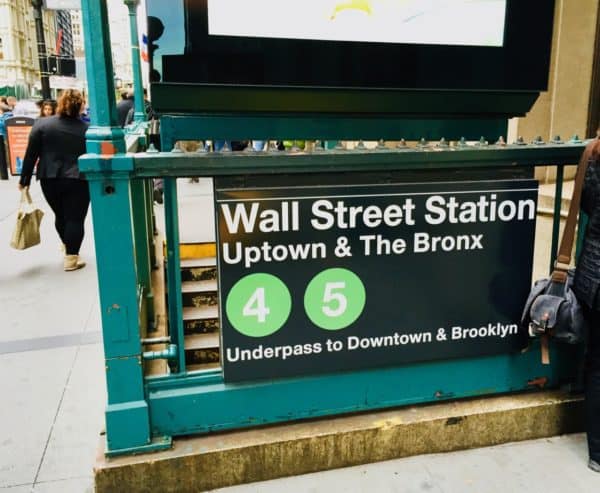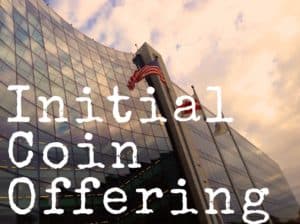
Blockchain initial coin offerings (ICOs) have democratized capital formation for a new generation of application services. From startups to nation states, tokens are a revolutionary construct that allow for innovative function, value and liquidity. Over the past three years, ICOs have successfully funded the development of a burgeoning Blockchain ecosystem.
However, the current process of running an Initial Coin Offering (ICO) has a black eye. As the market matures, the name and process are in dire need of a makeover.
The ICO circa 2017
The first ICO was held by Mastercoin (later to be renamed and rebooted as Omni) in July 2013. Many well-known cryptocurrencies followed including Ethereum’s ether, NXT, Bitshares, Maidsafecoin, NEM, Synereo, Factom, DigixDAO, Lisk, Waves.
Hence the C (Coin) in ICO.
However, with Ethereum smart contracts becoming a mainstream enabler of a wide array of Blockchain services (soon to be followed by next-gen contract blockchains such as EOS), ICOs are no longer tied solely to a cryptocurrency offering. The ICO has matured from novelty to leviathan raising over $3 billion globally in 2017 with over 30 launches per day heading into January 2018.
Early ICOs where supported by HODLers, crypto enthusiasts, similar in many ways to a kickstarter community. Early campaigns did not attract professional investors. This process side steps much of the costly prerequisites of regulated capital-raising required by incumbent venture capitalists or banks. ICOs were, by Investopedia, defined as an unregulated capital raise not registered with any government organization lacking investor protection.
The value proposition for buyers and sellers was simple:
- For the investor, ICOs were viewed as an evolution of crowdfunding. However, unlike contributing a few bucks to a Kickstarter with the prospect of owning the first products off the assembly line, ICOs are crowd sales with investors receiving a token. This token was the equivalent of the receiving value in the network offering. ICO supporters are not waiting for their Kickstarter-funded tech-wonder in the mail, they are keen to see a return on their cash.
- For the participating company, the tokens are provisioned as a way of capital formation without onerous VC dilution. For any entrepreneur who has experienced ownership ratcheted down on equity raises, ICOs are a cost effective and effective way of reaching the market.
- For the product or service, the token has the additional function of marketing the offering to a global audience that has a vested stake in the outcome. Not only is a successful ICO broadcast to a captive audience, investors become the first adopters of the resulting products and services.
Similar to a crowdfunding mechanism, ICOs allow for democratized global participation. By simply publishing an Blockchain address anyone can participate in a raise.
If the funds requirements are met within a specified window, the proceeds are used to build the proposed solution. Nimble examples such as the Attention Token raised $26 million in 34 seconds.
There are many innovative Blockchain solutions funded by a cadre of excited Blockchain supporters. However, as the market matures, I see more examples of token offerings that have little to do with longterm Blockchain solutioning and are simply using the Blockchain as a way of provisioning dividend or yield-based tokens and marketing them to a wider democratized audience.
[clickToTweet tweet=”Similar to a #crowdfunding mechanism, #ICOs allow for democratized global participation” quote=”Similar to a #crowdfunding mechanism, #ICOs allow for democratized global participation”]
There is a decided tension between the Blockchain enthusiasts and capital markets folk that are starting to leverage the platform as a fund raising mean-to-an-end as opposed to an end-in-itself. There is a chasm between these two groups.

Two Sides of the Mountain
ICOs were developed by the Blockchain community. In large part, this community has gravitated to this decentralized consensus economy because of a distrust for status quo centralized financial services.
Bitcoin was a birth child of the 2008 banking crisis. And for the early Blockchain enthusiasts, there was little interest in pandering to incumbent, mainstream investors. If you take a Twitter stroll through crypto investors such as @CRYPTOBANGer or @cryptodemedici you see page after page of space-rocket, moon-buggy or looping sitcom gifs.
 On the other side of the mountain, Wall Street power brokers have viewed this new economy with incredulity. Blockchain and its primary service offering, Bitcoin have been seen as a rogue structure fraught with jargon and instability.
On the other side of the mountain, Wall Street power brokers have viewed this new economy with incredulity. Blockchain and its primary service offering, Bitcoin have been seen as a rogue structure fraught with jargon and instability.
There is no tunnel between the two worlds. ICOs have only exacerbated this perception. Many have not forced KYC and AML checks. Some have evaded security regulations by misrepresenting the token as a utility.
Questionable touting of tokens by celebrities Floyd Mayweather and Paris Hilton as well as ICO founders tapping into funds to buy fast cars has further impugned the industry. Many ICOs have hidden behind colorful disclaimers that vouched that their token was not a security. Tezos, a storied ICO out of Switzerland, told its investors that the token purchase was a “non-refundable donation”.
Of course, not all ICO’s have avoided addressing regulation. Gnosis $300 million ICO, an AI prediction service platform, spent a considerable sum on legal services to assure its investors that the tokens were not deemed securities. However, a few bad actors and poorly thought out tokens have confused the markets which Forbes calls, “The Emperor’s New Coins.”
[clickToTweet tweet=”Wall Street power brokers have viewed this new economy with incredulity #ICO #Bitcoin” quote=”Wall Street power brokers have viewed this new economy with incredulity #ICO #Bitcoin”]
ICOs 2018
 Regulators and Main Street are starting to demystify, rename and repatriate ICOs. This is critical to engage mainstream investors. One solution is a P-I-B-C-O
Regulators and Main Street are starting to demystify, rename and repatriate ICOs. This is critical to engage mainstream investors. One solution is a P-I-B-C-O
Playing off the regulatory homophone, IPOs, ICOs are often confused as pure crypto coin offerings. PIBCO (or Public Initial BlockChain Offering) is a play off the PUBCO homophone and is a more accurate description and process for this new capital formation vehicle.
Immediate issues to address:
- Token = Security. Companies can run the “Howey Test” to assess whether a token should be treated as a security; however, the reality is that at any point in the future should the token be deemed a security it becomes regulated under the Securities Act of 1933. The SEC has already thrown the gauntlet at the DAO ICO saying that the token involved an investment with a reasonable expectation of profit by the efforts of others = security.
- White Papers = Offering Memorandum. It follows that the white papers that articulate the use case of the ICOs should be treated as an offering memorandums and should be considered a legal document that articulates the objectives, risks and terms of an investment.
- Escrow and Voluntary Hold Periods: Good practices by the initial investors to keep some skin in the game are critical well after selling down.
- Post-ICO governance: It is important to provide onward-going oversight and guidance on the security offering to make sure the PIBCO achieves key milestones.
As with IPOs reputable firms exhibit more active post-public offering involvement in the corporate governance. Let’s normalize the ICO process. Let’s lay down guidelines that take the best of incumbent regulatory structure and in the process rename this new capital formation as a Public Initial Blockchain Offering (PIBCO).
PIBCOs align with the Blockchain as an enabler not a confusing association solely with a crypto coin offerings. PIBCOs can be associated with the PUBCO rigour and introduce a trusted structure to the market in 2018.
Let’s build a tunnel between the two sides of the mountain.
[clickToTweet tweet=”Let’s lay down guidelines that take the best of incumbent regulatory structure #ICO #PIBCO” quote=”Let’s lay down guidelines that take the best of incumbent regulatory structure #ICO #PIBCO”]
 Gary Schwartz is a six-time recipient of the Deloitte Fast 50 Award and was recognized as the “2013 Mobile Commerce Evangelist of the Year” and “2014 US Retail Innovator of the Year.” He is presently the Managing Director of Pegasus Fintech and President of the Canadian Lenders Association and the Global Director of the Location Based Marketing Association. Gary is a Simon & Schuster NYC author with titles that include “THE IMPULSE ECONOMY,” “FAST SHOPPER, SLOW STORE” and is presently writing a book on the AI called “IF THINGS COULD SPEAK.” Gary is alumnus of Columbia University in New York and the Stanford University Center in Yokohama, where he was the recipient of the Asia and Japan Foundation Fellowships.
Gary Schwartz is a six-time recipient of the Deloitte Fast 50 Award and was recognized as the “2013 Mobile Commerce Evangelist of the Year” and “2014 US Retail Innovator of the Year.” He is presently the Managing Director of Pegasus Fintech and President of the Canadian Lenders Association and the Global Director of the Location Based Marketing Association. Gary is a Simon & Schuster NYC author with titles that include “THE IMPULSE ECONOMY,” “FAST SHOPPER, SLOW STORE” and is presently writing a book on the AI called “IF THINGS COULD SPEAK.” Gary is alumnus of Columbia University in New York and the Stanford University Center in Yokohama, where he was the recipient of the Asia and Japan Foundation Fellowships.
